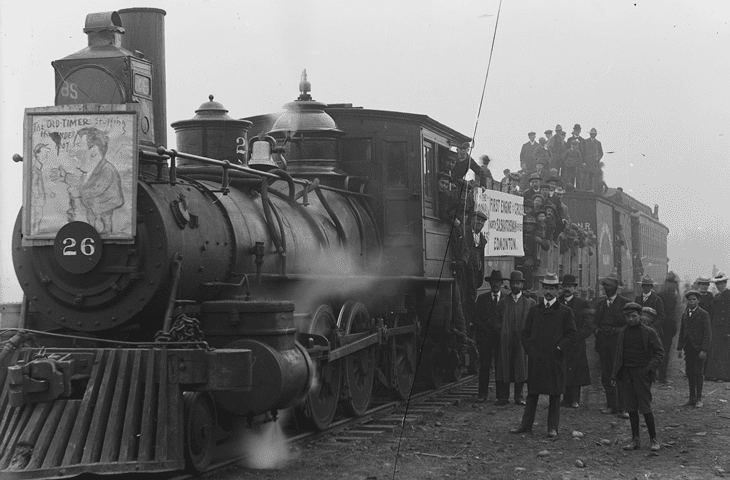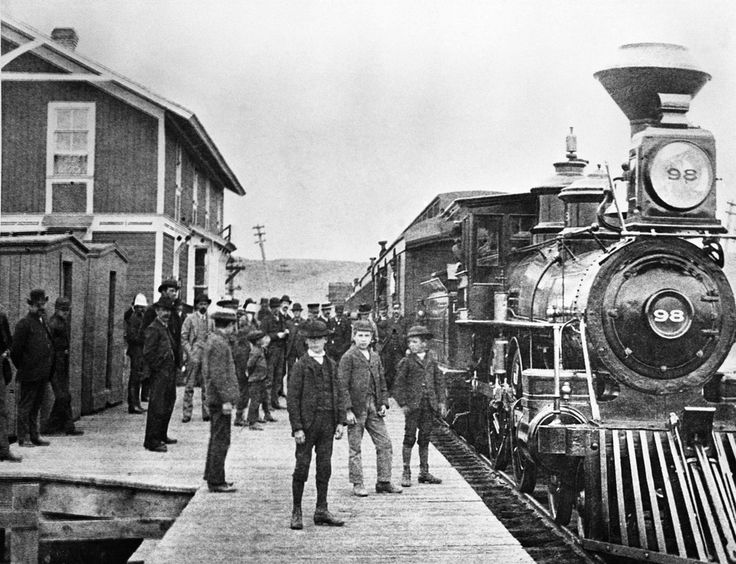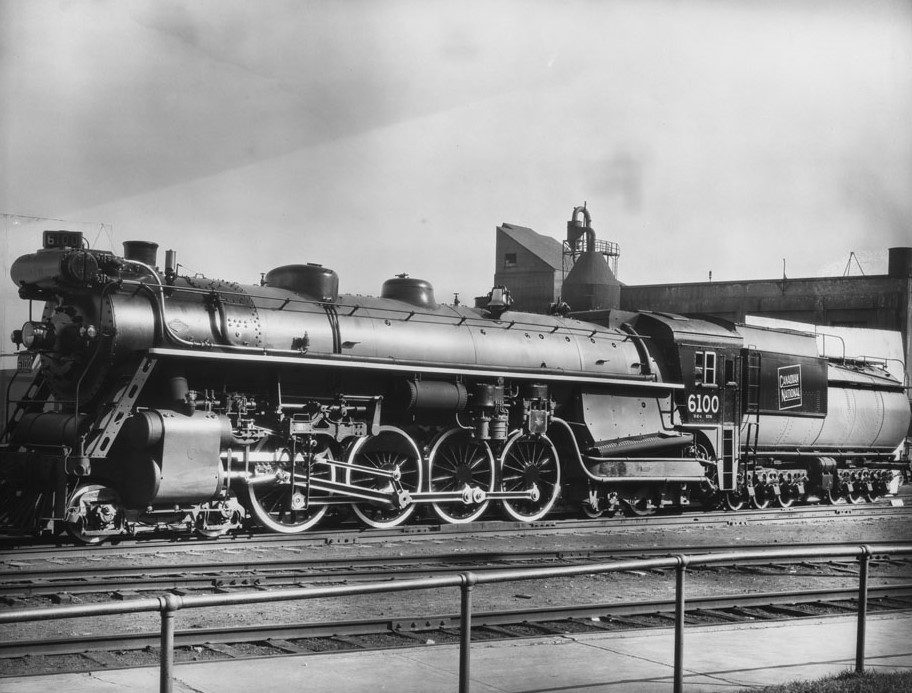The history of the development of Western Canada is directly related to the history of railway transport. Any improvement in transport increased people’s comfort and developed trade. Alberta was the last province to build a railway. As late as 1882–83, the Canadian Pacific Railway (CPR) was laid through Calgary, Medicine Gate and Banff. Alberta’s railway history began then. How the railway developed further, read more on calgary-future.
The first railway lines
У 1885 році завершили будівництво лінії CPR від району Медисин-Гет до Летбріджа, а в 1890-му – на південь до США, щоби з’єднатися з американською залізничною системою. Протягом наступних 25 років створювали розгалуження залізниці, більшість із них – на півдні Альберти.
У 1891 році завершили будівництво окремої залізниці C&E між Калгарі та містом Стратконою. Згодом місто Страткона приєднали до Едмонтона, а C&E стала частиною CPR.
In Edmonton itself, the first railroad was the EY&P. In 1902 it merged with C&E at Strathcona. From there it ran along the Mill Creek Gorge and reached Edmonton via the Low Level Bridge. EY&P later became part of Canadian Northern Railway (CNoR). By 1913, a number of CNoR branches had already been built, particularly in central Alberta.

Construction of ACR
In May 1901, the Alberta Central Railway (ACR) project was registered to start at Red Deer and run east to Saskatoon, splitting there with a southern route through Moose Joe and south to the US, and a northern route to Ft. Churchill. To the west it would continue to the Brazeau coal fields, then extend north over Yellowhead Pass and connect with another railroad that ran all the way to Vancouver.
A federal grant was not approved until 1908, when surveying began, but actual construction began 2 years later due to financial problems. The ACR crossed the Canadian Pacific Railway and Wascana Creek, then headed west through the Westpark area and southwest near the center of Red Deer County.

In the east, a line was built through Keene Canyon. A wooden overpass was built there in 1911. This overpass was the second longest bridge of its type in Alberta. South of the bridge, the railway connected with the CPR until 1962. After 1962, the interchange was moved further south to Tuttle.
However, due to the desire to build a high-quality railway line, the ACR quickly went bankrupt. Therefore, in 1912, the CPR took over the ACR as a subsidiary, and since then it has been wholly owned by it.
The construction boom of 1911–14 came to an abrupt end with the outbreak of World War I. The CPR was not interested in extending the originally planned eastern section of the railway, so the tracks to Mountview station were torn east of the main line in 1913. The overpass across Keene Canyon was demolished in 1917. The bridge over the CPR and Wascana Creek was dismantled.
In 1957, the assets of the ACR were transferred to the CPR, at which time the Alberta Central Railway ceased to exist entirely. The CPR continued to call the line the Alberta Central Division until it was finally closed in 1983 (the last train ran in 1981). The rails were torn, but a large part of the line remained intact. Within this line, the City of Sylvan Lake has transformed an abandoned railroad corridor within the community into a natural linear park.
The Mintlo steel trestle over the Red Deer River was left as a monument to the region’s development as a transportation hub for Central Alberta. Two former ACR stations have been converted for residential use. The bridge over the North Saskatchewan River was leased and later sold to Canadian National Railways (CNR), which was formed in 1919.
Clashes around the deposit
When the CPR and the Northwestern Railroad (CNWR) were building the line west of Stettler, there were many stories of fights and disputes that arose between the two construction crews as each tried to get to the Brazeau coal fields first.
Instead of building a separate bridge over the river, the CNWR negotiated with the CPR to obtain rights-of-way for that section of track, as it could not obtain such rights itself. With the permit granted, CPR had partial rights to the Brazeau coalfields.
PR was unlikely to take advantage of these rights at first because it had no customers west of Rocky Mountain House and the mines at Nordegg were owned by the same principals as CNWR. However, during the First World War, after the Canadian government took ownership of the mine, these rights were partially exercised by the CPR, although this is not documented. It is also said that in the early 1950s both railways offered ticketing services at Nordegg station.
Lochearn Station in the town of Rocky Mountain House was used by both railroads. A new station was built in 1920, it was also shared by both railways with ticket booths for each. Originally the CPR portion was called Lochearn and the CNWR portion Rocky Mountain House. Around the same time, CNWR joined Canadian National Railways (CNR). Later, both sides of the station were called “House in the Rocky Mountains”. The station was closed in 1966, and the following year it was completely demolished.
How did the Alberta railway develop further?
In 1909, Canada’s Grand Trunk Pacific (GTP) transcontinental railway reached Edmonton. It built several branches, and in 1916 the line company built the Macdonald Hotel in downtown Edmonton. In 1919, GTP and CNoR joined the newly formed Canadian National Railways (CNR).

Railways were built to serve the transport needs of settlers from the West. In 1929, the Northern Alberta Railways (NAR) was formed. In general, the NAR united the railways of Edmonton, Dunvegan and British Columbia. Such combined railways began to be built in Edmonton as early as 1912. In 1981 they also merged with the CNR.
In May 1969, the construction of the newest railway in North America called the Alberta Resources Railway (ARR) was completed. The 234-mile line ran between Hinton and Grand Prairie. A few more years later, the CNR built a line between Peace River and Hay River.
After the construction of convenient highways began, railway companies began to gradually abandon railway lines. As for the CNR railways, until 1978 they served passenger transport and were owned by the state, and then they were acquired by the Canadian Via Rail Corporation. From then on, the railways were simply called CN (Canadian National Railway).

The only passenger services operated by CN after 1978 were a few freight and passenger trains (mixed) in Newfoundland and a few commuter trains to Montreal. Mixed trains operated until 1988, and commuter trains to Montreal later fell into the hands of the Montreal company EXO.
On November 7, 1995, the Canadian government privatized CN. Over the next 10 years, the company expanded significantly in the United States and became Canada’s largest railroad both in terms of revenue and the size of the railroad network. The headquarters of CN was located in Montreal. As of July 2019, its market capitalization was approximately C$90 billion.


